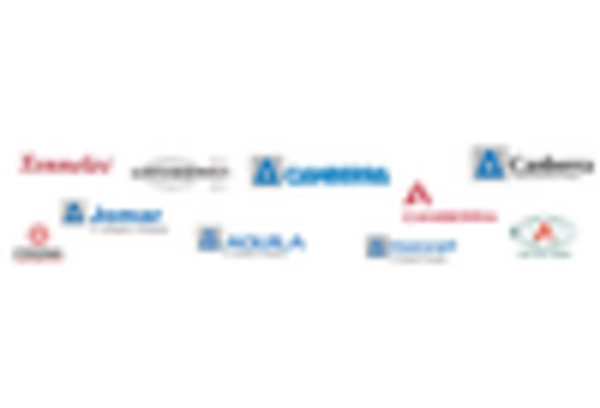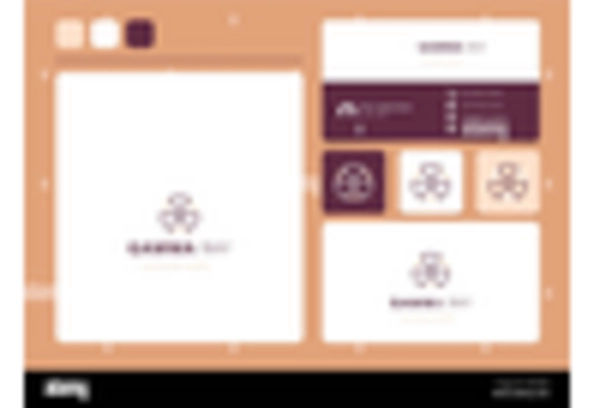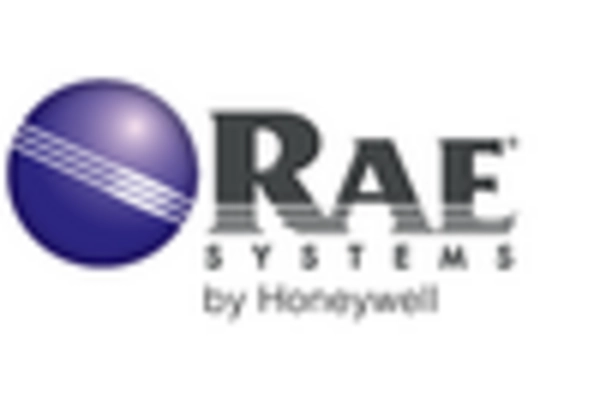Increased Regulatory Compliance
The Geiger Counter Market is significantly influenced by heightened regulatory compliance across various sectors. Governments and regulatory bodies are enforcing stringent safety standards related to radiation exposure, particularly in industries such as healthcare, nuclear energy, and environmental protection. This regulatory landscape necessitates the use of reliable radiation detection equipment, including Geiger counters, to ensure compliance with safety protocols. Consequently, the demand for high-quality Geiger counters is expected to rise, as organizations seek to adhere to these regulations. The market is anticipated to witness a surge in demand, with an estimated increase of 4.8% in the next few years, as compliance becomes a priority for many organizations.
Expansion of Nuclear Energy Sector
The Geiger Counter Market is poised for growth due to the expansion of the nuclear energy sector. As countries seek to diversify their energy sources and reduce carbon emissions, nuclear power is gaining traction as a viable alternative. This expansion necessitates the use of Geiger counters for monitoring radiation levels and ensuring safety in nuclear facilities. The increasing number of nuclear power plants and the refurbishment of existing ones are likely to drive demand for advanced radiation detection equipment. Analysts predict that the market could experience a growth rate of approximately 5.5% in the coming years, fueled by the rising investments in nuclear energy infrastructure.
Growing Awareness of Radiation Safety
The Geiger Counter Market is benefiting from a growing awareness of radiation safety among the general public and professionals alike. Increased media coverage of radiation-related incidents and the potential health risks associated with radiation exposure have heightened public concern. This awareness is driving demand for Geiger counters, as individuals and organizations seek to monitor radiation levels in their environments. Educational initiatives and training programs are also contributing to this trend, as they emphasize the importance of radiation safety. As a result, the market is projected to expand, with a potential growth rate of 6% over the next few years, reflecting the increasing emphasis on safety and monitoring.
Technological Advancements in Detection
The Geiger Counter Market is experiencing a notable transformation due to rapid technological advancements. Innovations in sensor technology, data processing, and miniaturization are enhancing the accuracy and efficiency of Geiger counters. For instance, the integration of digital displays and wireless connectivity allows for real-time data transmission and analysis. This evolution not only improves user experience but also expands the application range of Geiger counters in various sectors, including environmental monitoring and nuclear safety. As a result, the market is projected to grow at a compound annual growth rate of approximately 5.2% over the next five years, driven by these technological enhancements.
Emerging Applications in Environmental Monitoring
The Geiger Counter Market is witnessing a surge in demand due to emerging applications in environmental monitoring. As concerns about environmental pollution and radiation exposure grow, Geiger counters are increasingly utilized in various environmental assessments. These devices play a crucial role in measuring background radiation levels, assessing contamination in soil and water, and monitoring radiation in urban areas. The rising emphasis on environmental sustainability and public health is likely to propel the market forward. It is estimated that the market could grow by 4.2% in the next few years, driven by the increasing need for effective environmental monitoring solutions.


















Leave a Comment